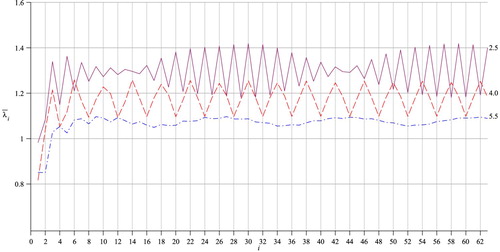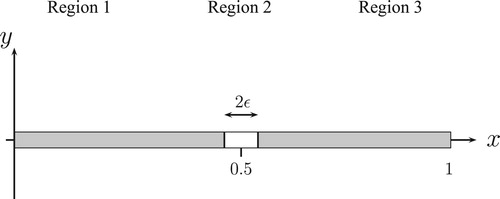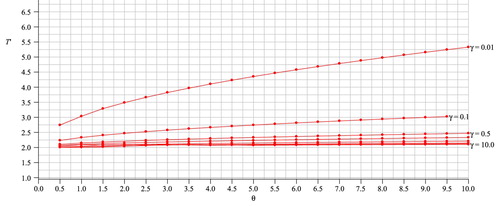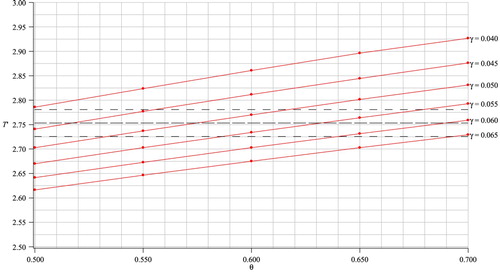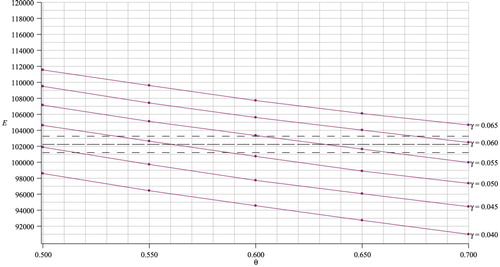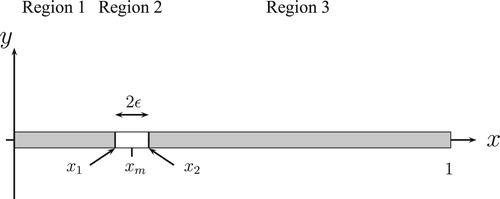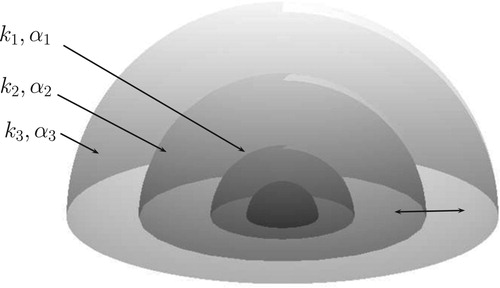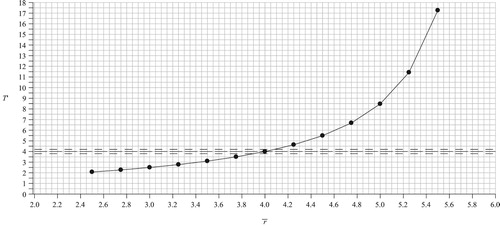Figures & data
Figure 1. Schematic of a solid composite rod showing discontinuities in the heat capacity c and thermal conductivity k.
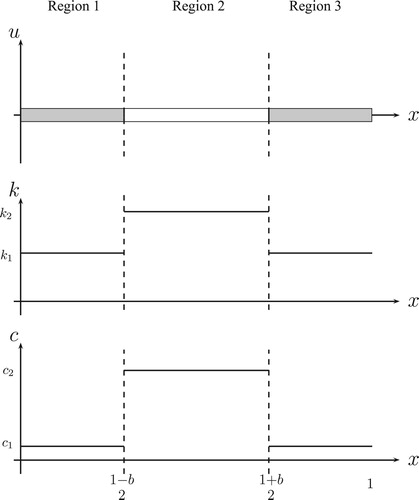
Figure 4. Variation in solotone period for , representing a bond width of 0.5%. The values of γ are: 0.01, 0.1, 0.5, 1.0, 2.5, 5.0, 7.5, 10.0.

Figure 6. Variation in solotone period for , representing a bond width of 10%. The horizontal dashed line shows the solotone period for a steel–epoxyadhesive–steel rod.
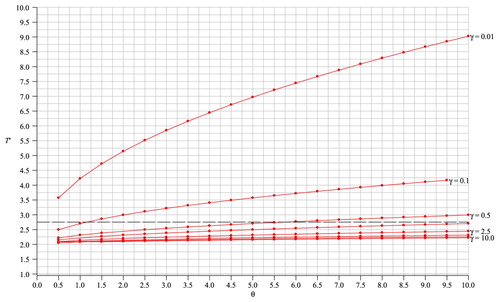
Table 1. Solotone period as a function of bond width for a steel–epoxyadhesive–steel rod.
Table 2. Thermal conductivity 
 , specific heat capacity
, specific heat capacity 
 , and relative discontinuities
, and relative discontinuities 
 and
and 
 for steel and epoxy adhesive.
for steel and epoxy adhesive.
Figure 7. Variation in Euclidean distance for . The horizontal dashed line shows the Euclidean distance for a steel–epoxyadhesive–steel rod.

Figure 8. Variation in solotone period for (finer scale). The horizontal lines of short dashes show
for a steel–epoxyadhesive–steel rod.
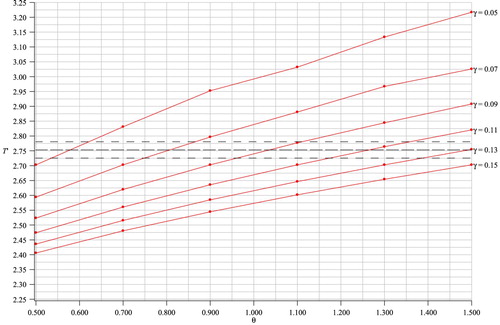
Figure 9. Variation in Euclidean distance for (finer scale). The horizontal lines of short dashes show
for a steel–epoxyadhesive–steel rod.
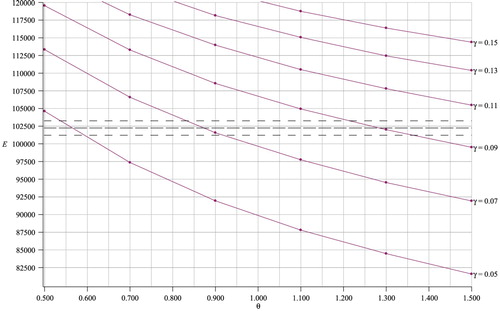
Table 3. Sensitivity of 
 estimates. The values in columns 2 and 3 come from Figures and . Figures and were used for columns 6 and 7. Columns 5 and 9 give the relative percentage error for
estimates. The values in columns 2 and 3 come from Figures and . Figures and were used for columns 6 and 7. Columns 5 and 9 give the relative percentage error for 
 .
.
Table 4. Thermal conductivity 
 , specific heat capacity
, specific heat capacity 
 , and relative discontinuities
, and relative discontinuities 
 and
and 
 for aluminium and porous aluminium.
for aluminium and porous aluminium.
Figure 13. Solotone period plotted against the position of the centre of the porous region
. The porous region is of width
where
(asterisk), 0.01 (diamond) and 0.025 (solid circle). The horizontal line of long dashes indicates the solotone period for
and
. The lines of short dashes show
.
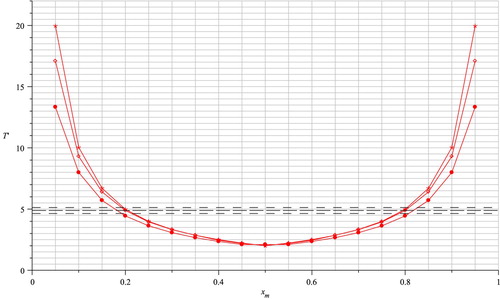
Figure 14. Robin boundary conditions with h = 500. Solotone period plotted against the position of the porous region
. The porous region is of width
where
(asterisk), 0.01 (diamond) and 0.025 (solid circle). The horizontal line of long dashes indicates the solotone period for
and
. The lines of short dashes show
.
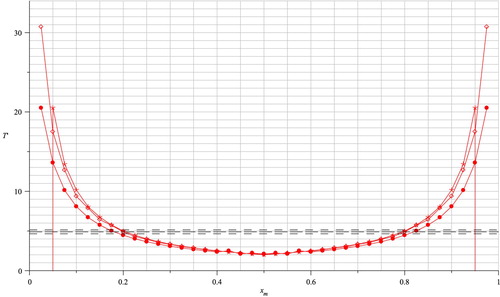
Figure 15. Cross-section of a solid composite sphere with n layers. Each layer possesses a different thermal conductivity and a different thermal diffusivity
.
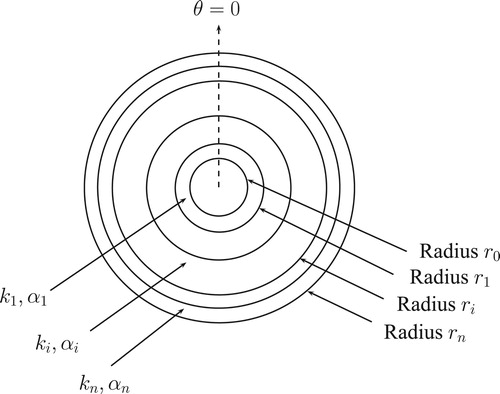
Figure 16. Cross-section of a three-layer solid composite hemisphere. Each layer possesses a different thermal conductivity and a different thermal diffusivity
.
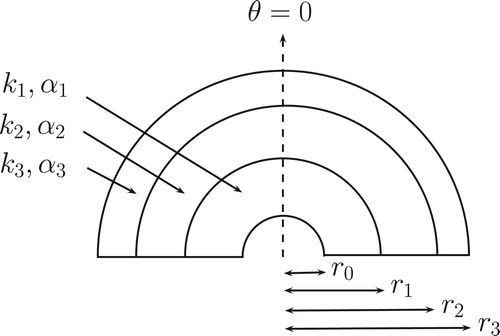
Table 5. Elements of the determinant forming the left-hand side of Equation (Equation7 (7)
(7)  (7) ).
(7) ).
Figure 17. First differences for three values of , namely
(solid line),
(dashed line) and
(dash-dotted line). The corresponding solotone periodicities are 2.07, 3.99 and 17.26.
